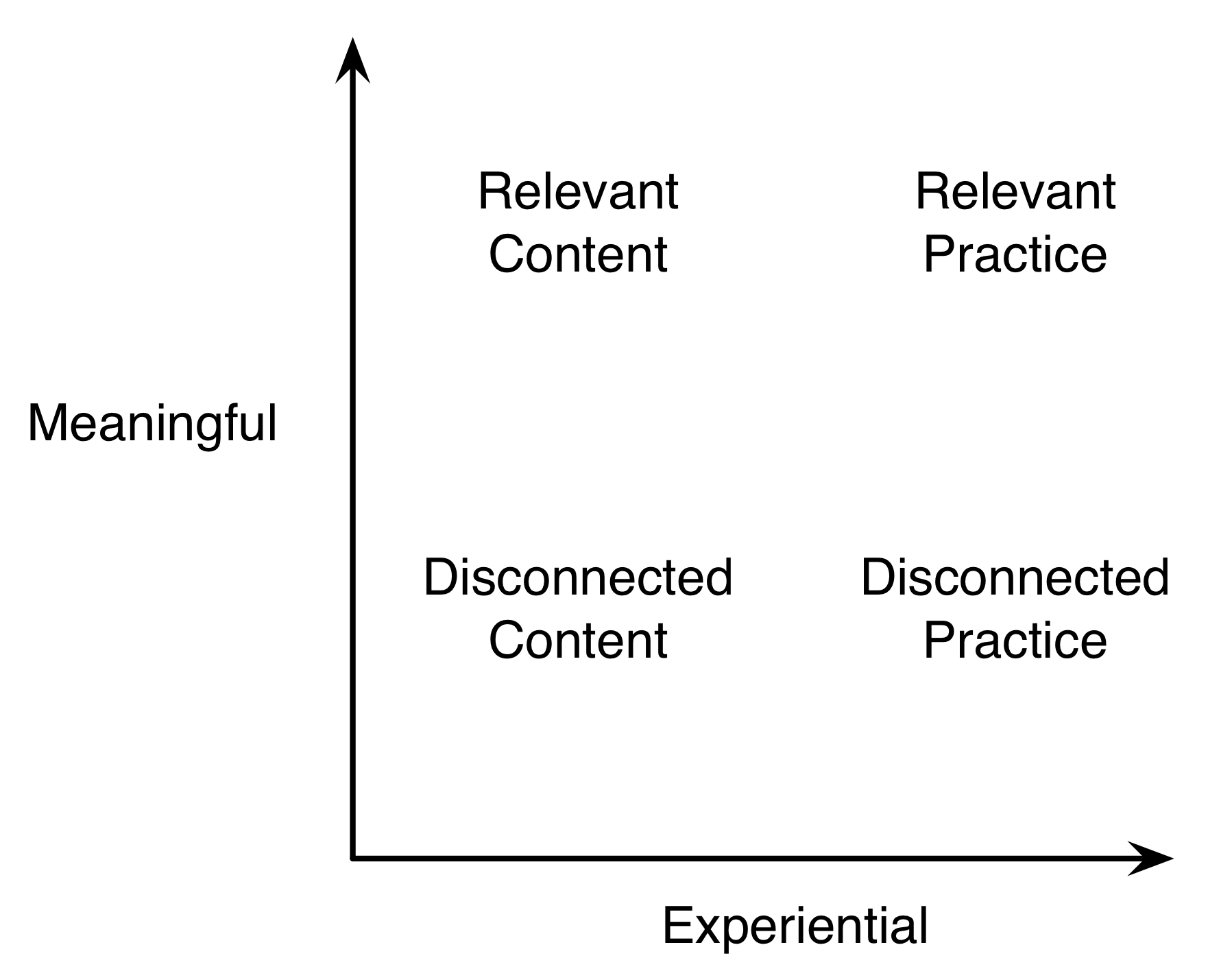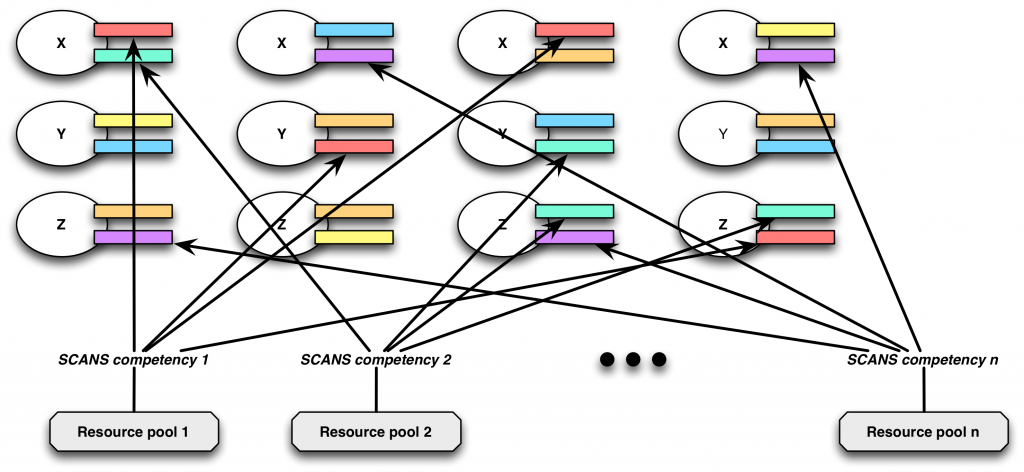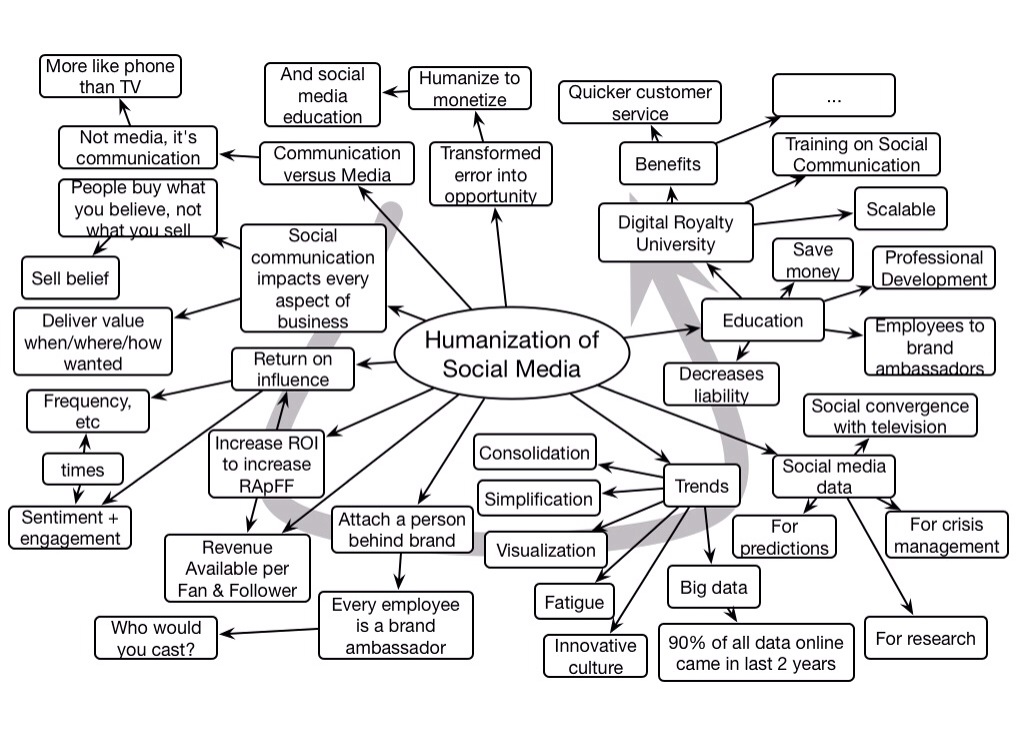Amy Jo Martin spoke at ASTD’s TechKnowledge conference, telling us engagingly about humanizing social media to monetize it. In addition to useful ways to think about the power of social media, for better or worse, she portrayed some interesting ways to think about generating or saving revenue.
Search Results for: engag
Mac memories
This year is the 30th anniversary of the Macintosh, and my newspaper asked for memories. I’ll point them to this post ;).
As context, I was programming for the educational computer game company, DesignWare. DesignWare had started out doing computer games to accompany K12 textbooks, but I (not alone) had been arguing about heading into the home market, and happened to run into Bill Bowman and David Seuss at a computer conference, who’d started Spinnaker to sell education software to the home market, and were looking for companies that could develop product. I told them to contact my CEO, and as a reward I got to do the first joint title, FaceMaker. When DesignWare created it’s own titles, I got to do Creature Creator and Spellicopter before I headed off to graduate school for my Ph.D. in what ended up being, effectively, applied cognitive science.
While I was at DesignWare, I had been an groupie of Artificial Intelligence and a nerd around all things cool in computers, so I was a fan of the work going on at Xerox Palo Alto Research Center (aka Parc), and followed along in Byte magazine. (I confess that, at the time, I was a bit young to have been aware of the mother of all demos by Doug Engelbart and the inspiration of the Parc work.) So I lusted after bitmap screens and mice, and the Lisa (the Mac predecessor).
My Ph.D. advisor, Donald Norman, had written about cognitive engineering and the research lab I joined was very keen on interface design (leading to Don’s first mass-market and must-read book, The Psychology of Everyday Things, subsequently titled The Design of Everyday Things, and a compendium of writings call User-Centered System Design). He was, naturally, advising Apple. So while I dabbled in meta-learning, I was right there at the heart of thinking around interface design.
Naturally, if you cared about interface design, had designed engaging graphic interfaces, and had watched how badly the IBM PC botched the introduction of the work computer, you really wanted the Macintosh. Command lines were for those who didn’t know better. When the Macintosh first came out, however, I couldn’t justify the cost. I had access to Unix machines and the power of the ARPANET. (The reason I was originally ho-hum about the internet was that I’d been playing with Gopher and WAIS and USENET for years!)
I finally justified the purchase of a Mac II to write my PhD thesis on. I used Microsoft Word, and with the styles option was able to meet the rigorous requirements of the library for theses without having to pay someone to type it for me (a major victory in the small battles of academia!). I’ve been on a Macintosh ever since, and have survived the glories of iMacs and Duos (and the less-than stellar Performa). And I’ve written books, created presentations, and brainstormed through diagrams in ways I just haven’t been able to on other platforms. My family is now also on Macs. When the alternative can be couched as the triumph of marketing over matter, there really has been little other choice. Happy 30th!
Gaming Learning
Remember the game Where in the World Is Carmen San Diego? The game had you chasing an international fugitive, and you had to decipher clues about world facts to figure out where to go next to catch her, using an included world almanac. The claim for learning was that it developed knowledge of world facts. And that was patently shown to be wrong by Cathie Sherwood, then at Griffith University (if memory serves). What she showed was that kids learned how to use an almanac, but didn’t remember the information pointed to by the clues. And this is a consistent problem with educational software.
I’ve been thinking about games for the simple reason that I’m keynoting and doing a panel and a session about gaming and learning at NexLearn’s Immersive Learning University conference next week. I’ll be talking about how to design them, and lessons from games for the design of learning and assessment. So when I read this recent article, while generally supportive, I had a problem.
The good thing with the article is that it argues that we should be doing more with games to support learning, and I couldn’t agree more. When properly designed, games provide deep and meaningful practice. And we could be tapping into much more of the facets of games for designing learning experiences. Challenge, decisions, and consequences in a safe environment.
So what bothered me? At one point, the article does on about what skills are required in computer games, things like problem-solving, strategy, etc. And, yes, games do require those skills. However, what many have done wrongly is say that the games develop those skills, and this is wrong. For instance, when Kurt Squire was touting the learning outcomes of Civilization, it came from a teacher who scaffolded that understanding, not intrinsically from the game. Similarly, when my kids were playing Pajama Sam (a great series of games with interesting stories and appropriate challenges), we were scaffolding the learning.
For some, requiring skills will develop them. For the 10% or so who survive despite what we do to them ;). But if you want to be sure they’re getting developed, you need to do more than require them, you need to scaffold them. And we could do this if we wanted to. But we don’t. The existence of coaching for higher-level learning skills in the game environment is essentially non-existent. And I just think this is a shame. (Many years ago I was proposing research to develop a coaching environment on top of a game engine, so it could be available in any game designed with that engine, but of course it was deemed too ambitious. Hmmph.)
And don’t get me wrong, the article didn’t make wrong statements, it just reminded me of the problem that has bugged me and also I think damaged the industry (think: why is the term ‘edutainment’ tainted?). But we need to be careful what we say and how we talk about it. We can develop meaningful learning games, but we have to know how to do it, not just put game and instructional designers in a room together and expect them to know how to create a success. You need to understand the alignment of elements of learning and leverage those to achieve success. Don’t settle for less.
2013 Reflections
It’s appropriate to look back at the year, here at the end of it. Reflection is a powerful and all-too-neglected tool. My year started off with a bit of travel and ended up with a lot of thought, writing, and preparation.
I started off with a bang, with two separate trips for presentations in Saudi Arabia with a few weeks of each other (phew!). The second included a paper that was a stab at rethinking formal learning: Redesigning Design (warning, PDF). It integrated my previous discussion of activity-centered learning with backwards design. And visiting foreign countries is something I enjoy, if not getting there ;).
I also presented at a wide variety of events, from regular venues like ASTD‘s TechKnowledge and ICE, and the eLearning Guild‘s Learning Solutions, mLearnCon, Performance Support Symposium, and DevLearn. More unique opportunities included the Professional Association of College Trainers and the International Conference on College Teaching and Learning. I attended Association for Educational Communications and Technology just to hear what’s happening on the academic side.
I always enjoy such opportunities. The most interesting aspect to me are the discussions that emerge after sessions, whether I’m the one presenting or I’m getting a chance to listen to someone else. The conversations in-between are also interesting, with colleagues old and new. Having a chance to mingle informally adds a valuable component to professional interactions.
Which was the driving force to attend a couple of retreats that are a different sort of professional reflection. This past year I attended Up to All of Us, and a second, similar, get together, both for the second time. These were opportunities to recharge and connect with like-minded colleagues. The ability to listen and interact in natural settings over an extended period is a separately valuable type of interaction.
Some of my best interactions came online in small groups, not least the Internet Time Alliance (the rest of you know who you are). The chance to interact with colleagues like Jay, Jane, Charles, and Harold continues to be a fabulous boon. My only regret is that we didn’t quite get things going the way I’d originally hoped we would. Despite the intellectual firepower, we didn’t converge on a unified model until too late. I admit my limitation in that I couldn’t really be prepared to ‘go to market’ until we had a core framework that would serve as the basis for tools, a book, etc. When we finally did, it was too late as everyone had gone off in their own directions, of need. The model is still important, and will be revisited in the forthcoming tome, and while it can serve as a basis for us working together (we’re still an entity, and available), but the real benefit to us is the continued opportunity to interact intellectually as well as personally.
I engaged in client work as well, of course, which is yet another powerful opportunity to learn, coupled with the opportunity to contribute. I was fortunate to engage with a variety of different organizations in facilitating design and strategy, including some mobile work. I like it when I can help clarify concepts, leading to tighter design, as well as raise the full spectrum of issues leading to more comprehensive strategies. I really enjoy getting into specific contexts, coming to grips with the issues, looking for matching models and frameworks, and systematically working through them to provide innovative solutions. Not when you’re doing the ordinary, but when you are uncertain what’s needed, or need to take it up a notch, is where I’ve been able to add real value.
I spent much of the latter part of the year working on my next book, to be out this coming year. I’m not happy with the state of the industry, nor the pace of change, so the book and another initiative (stay tuned) are a couple of stabs at trying to make things better. If you’re reading this, you’re more likely part of the solution than the problem, of course ;).
I’d also agreed to do a number of chapters in books and articles, so as soon as the book manuscript was done, I had to scramble to meet my other deadlines. As well as presentations for some of this coming year’s commitments; a topic for another post. You’ll see more writing emerging in articles, chapters, etc, soon. Duck!
Personal life was not neglected, I took a couple of weeks off this summer to travel with the family on an East Coast US History tour, from Boston, through New York City, to DC, with a side trip to Gettysburg. It was not only pleasant, but also a learning experience in many ways, both seeing new things, and seeing them through different eyes. I also spent some time in the wilderness, backpacking through Yosemite National Park, a different sort of retreat, but equally valuable. We also dealt with the passing of my mother, which was not unexpected. It’s odd to finally be the eldest, the patriarch as it were.
I have to say it was a good year, despite the challenges. And it leads me to be optimistic, looking forward, as is my wont. I hope that, as you look back on your year, you find insight, inspiration, and satisfaction.
A personal look at crowd sourcing
The last time I had a beard was right before college graduation. I was off in the wilderness, and when I came back my razor was busted. So, I grew a beard that was largely red, and in terms of being well behaved, well, it made Gabby Hayes look well-groomed. So I’ve been clean shaven since (see to the right).
 Well, that’s changed. To make a long story short, I had an extended period of time away from family and razor, and grew it out. When I came back, the reviews went from mixed to positive, not a negative word. Now, of course, you seldom hear from those who don’t like a look (wonder how many people do not like Quinnovation as a company name), but the important people (my immediate family) either initially or grew to prefer the new look. (Maybe the more of my face I cover, the better ;)
Well, that’s changed. To make a long story short, I had an extended period of time away from family and razor, and grew it out. When I came back, the reviews went from mixed to positive, not a negative word. Now, of course, you seldom hear from those who don’t like a look (wonder how many people do not like Quinnovation as a company name), but the important people (my immediate family) either initially or grew to prefer the new look. (Maybe the more of my face I cover, the better ;)
Well, this creates a conundrum, because I’ve plenty of promo photos out there for various speaking engagements that now are no longer appropriate. It was time for a new official photo (it was anyways, this is close to a decade old, and I do not want to be the guy who’s photo is decades out of date).
The official way to do this is to hire someone, but I perused the local options, and either they were sidelining portraits on top of weddings, babies, etc, or they used stock backgrounds. The pre-beard shot above was taken by my friend and colleague Jay Cross, chose it out of several candidates, and liked the more natural setting. So I got my wife to take a bunch of shots, and we (with my daughter’s help) went through them. They were all flawed for various reasons (some problems she saw and I didn’t, and there begins the tale; it was a collaborative project and decision). We tried again, and finally found two we liked. How to decide?
So I went out to a small group of colleagues who I could trust would give me straight feedback, and they reliably preferred one. This was a relief. However, there was a problem: my face was kind of dark against the background. And, lo, one of them stepped up and offered to work on the photo.
She kindly took the shadow off my face, and did another lightening up the whole picture. The former was better, but I was concerned that there wasn’t sufficient contrast, so she also created one that had the background muted. Her contribution was so valuable. Now I had two more to choose from: the more natural one or the one with the muted background. How to answer this?
 So I went out to four of the groups I have or was going to talk for, and asked them which they would prefer for their brochures or websites. Of the 3 that responded, they all preferred the natural background (my preference). I’d converged on a new headshot.
So I went out to four of the groups I have or was going to talk for, and asked them which they would prefer for their brochures or websites. Of the 3 that responded, they all preferred the natural background (my preference). I’d converged on a new headshot.
More importantly, I had avoided my usual blind decisions, and got contributions all along the way that made the outcome better. Throwing out ego and being willing to ask for help isn’t my natural approach, as I hate to impose, but I know I don’t mind helping colleagues and friends, so I stepped out of my comfort zone and I’m so grateful they stepped up.
The take-home lesson for me is the power of communication and collaboration: crowd sourcing works. You may not like the new look, but it’s where I’m at, and it’s a lot better picture than I’d had if I tried to do it alone.
Making Sparks Fly
Last night I did a presentation for the San Diego chapter of ISPI titled ‘making sparks fly’. I used that concept to talk about a couple of my favorite topics: deeper instructional design, and social learning.
In the former, it’s about two things: getting the real cognitive underpinning right, and the emotional content, both integrated in a natural and elegant way. So you start with your objectives (at a high enough level, addressing real business needs). Then you immediately develop deep practice with core decisions embedded in meaningful contexts. You need sufficient practice to not get it wrong, as opposed to just getting it right. Then we elaborate with model-based concepts and story-based examples. All introduced in ways that engage the emotions as well as the mind, and closing that process off similarly addressing the emotional as well as the cognitive. The point being, if you’re going to do formal, do it right.
From there, I segued off to talk about social: the power of the additional processing you get from social learning. This includes sharing ideas, and collaborative work. Then, systematically looking at tools like blogs, wikis, profiles, feeds, and more for both formal and informal learning. The notion is that thinking and working ‘out loud’ are, in the right culture, better than not.
Formal learning (and I didn’t discuss performance support, after all it was ISPI :) addresses the optimal execution that will be just be the cost of entry going forward, while continual innovation requires the creative friction, the interpersonal interaction that generates new ideas. You need to have good learning and good performance support on those processes you can identify, but then you need to create the environment where folks are helping one another solve the new problems that arise, including new ideas. Engaging the learner, and the interaction, are both sparks to take what we do to the next level.
There’s more: culture, mindset, L&D role, and we touched on that, but in the broader picture, you want to start with social and performance support, only doing formal when you absolutely have to (as it’s dear). We need to stop doing formal only, and badly. We need to cover the spread, and do all well. Or else…
Meaningful and Experiential
At lunch last week with my colleague Jay Cross, we riffed on the most important word was for learning in the organization. I chose ‘meaningful’, he went with ‘experiential’. They’re both important, but I thought I’d tease them out a bit.
 I take meaningful in two senses: what you’re doing (read: learning) is directly related to what your goals are, and it’s something you care about. So, for example, in designing serious games, you want to focus on key skills, not on irrelevant material. And, to work as engagingly as possible, you also are also choosing a context that the learner cares about. Taking something relatively abstract like coaching, you could be providing support for developing a coaching model (rather than using an existing one), or you could be figuring out how to help a person separate out person from behavior (commenting on the latter is to be preferred). Similarly, it could be in the context of being a better accountant (uninteresting except to accountants), or it could be for sports (which might be of interest to a broader segment). The point is to be focusing on relevant skills in interesting contexts.
I take meaningful in two senses: what you’re doing (read: learning) is directly related to what your goals are, and it’s something you care about. So, for example, in designing serious games, you want to focus on key skills, not on irrelevant material. And, to work as engagingly as possible, you also are also choosing a context that the learner cares about. Taking something relatively abstract like coaching, you could be providing support for developing a coaching model (rather than using an existing one), or you could be figuring out how to help a person separate out person from behavior (commenting on the latter is to be preferred). Similarly, it could be in the context of being a better accountant (uninteresting except to accountants), or it could be for sports (which might be of interest to a broader segment). The point is to be focusing on relevant skills in interesting contexts.
Now, I take experiential to have some overlap, but to be addressing two senses as well: both the context you are learning in, and the nature of the learning experience. That is, you can be learning away from work, or in the work process, the latter being more ‘experiential’. And you can be learning by doing in either context, learning ‘how’, as opposed to learning ‘about’. I think there’s overlap here in being contextually relevant , but separate in the sense of personally interesting and the learning being applied.
I mapped it out, with lack of experiential and meaningful being disconnected content (which I see far too much of in workplace learning), or where we start providing knowledge how (not about) to be meaningful, providing activity-based learning to be experiential, and of course the ultimate being the intersection of both.
I’m sure Jay would argue that if it’s experiential, learning through real work experience, it’s inherently meaningful. And I’d argue that if it’s suitably meaningful, it naturally has to be experiential. Yet overall I’m happy take either one or both versus neither!
Evidence-based Design
In my last post, I asserted that we need evidence-based design for what we do. There are a number of sources for same. Of course, you could go do a Master’s or Ph.D. in cognition and learning, but there are shorter paths.
There are several good books out (and I believer that there is at least one more on the way) that summarize the implications of research design. Ruth Clark has been a co-author on a couple, eLearning and the Science of Instruction, and the subsequent Efficiency in Learning. Julie Dirksen’s Design for How People Learn is another good one. Michael Allen’s work on design is also recommended, e.g. Guide to eLearning.
Will Thalheimer, Ruth, and Julie regularly write and talk about these things in other forums than books. Go listen to them! I try as well, though often filtered through games, mobile, or elsewhere. There’re others, too.
A number of people run workshops on deeper design. I know I have one, and I’m sure others have them as well. Do try to make sure that it covers both cognitive and emotional elements, focusing on meaningful change.
There are gaps: there isn’t all the research we need, or at least not digested. The role of emotional engagement isn’t as well fleshed out as we’d like, and some of the research is frankly focused on studies too small to give practical guidelines (c.f. the consternation on serious game design that surrounded a recent post). Where we don’t have research, we have to make inferences from theoretical frameworks, but you should know those too. It’s better than going on ‘intuition’ or folk science.
Still, there’s no excuse to do un-engaging, over-written, and under-practiced learning. Better design doesn’t take longer (with the caveat that there’s some initial hiccup ’til we make the change). We have the knowledge, and the tools aren’t the barrier. Let’s do better, please!
Integrating Meta-learning
There’s much talk about 21st Century skills, and rightly so: these skills are the necessary differentiators for individuals and organizations, going forward. If they’re important, how do we incorporate them into systems, and track them? You can’t do them in a vacuum, they only can be brought out in the context of other topics. We can integrate them by hand, and individually assess them, but how do we address them in a technology-enabled world? In the context of a project, here’s where my thinking is going:
 First, you have some domain activity you are having the learner engage in. It might be something in math, science, social studies, whatever (though ideally focused on applied knowledge). Then you give them an assignment, and it might have a number of characteristics: it might be social, e.g. working with others, or problem solving. You could choose many characteristics, e.g. from the SCANS competencies (using information technology, reasoning), that the task entails. That task is labeled with tags associated with the required competency, and tracked via SCORM or more appropriately with the Experience API. There may be more than two, but we’ll stick with that model here.
First, you have some domain activity you are having the learner engage in. It might be something in math, science, social studies, whatever (though ideally focused on applied knowledge). Then you give them an assignment, and it might have a number of characteristics: it might be social, e.g. working with others, or problem solving. You could choose many characteristics, e.g. from the SCANS competencies (using information technology, reasoning), that the task entails. That task is labeled with tags associated with the required competency, and tracked via SCORM or more appropriately with the Experience API. There may be more than two, but we’ll stick with that model here.
 So, when we then look across topics that the learner is engaging in, and the characteristics of the assignments, we can look for patterns across competencies. Is there a particular competency that is troubling or excelling? It’s somewhat indirect, but it’s at least one way of systematically embedding meta-learning skills and tracking them. And that’s a lot better than we’re doing now.
So, when we then look across topics that the learner is engaging in, and the characteristics of the assignments, we can look for patterns across competencies. Is there a particular competency that is troubling or excelling? It’s somewhat indirect, but it’s at least one way of systematically embedding meta-learning skills and tracking them. And that’s a lot better than we’re doing now.
Remember the old educational computer games that said ‘develops problem solving skills’? That was misleading. Most of those games ‘required’ problem-solving skills, but no real development of said skills was embedded. A skilled parent or teacher could raise discussion across the problems, but most of the games didn’t. But they could. Moreover, additional 21C resources could be made available for the assignments that required them, and there could be both programmatic or mentor intervention to develop these.
We need to specifically address meta-learning, and with technology we can get evidence. And we should. Now, my two questions are: does the concept make sense? And does the diagram communicate it?
Assessing online assessments
Good formal learning consists of an engaging introductions, rich presentation of concepts, annotated examples, and meaningful practice, all aligned on cognitive skills. As we start seeing user-generated online c, publishers and online schools are feeling the pressure. Particularly as MOOCs come into play, with (decreasingly) government funded institutions giving online content and courses for free. Are we seeing the demise of for-profit institutions and publishers?
I will suggest that there’s one thing that is harder to get out of the user-generated content environment, and that’s meaningful practice. I recall hearing of, but haven’t yet seen, a seriously threatening repository of such. Yes, there are learning object repositories, but they’re not yet populated with a rich suite of contextualized practice.
Writing good assessments is hard. Principles of good practice include meaningful decisions, alternatives that represent reliable misconceptions, relevant contexts, believable dialog, and more. They must be aligned to the objectives, and ideally have an increasing level of challenge.
There are some technical issues as well. Extensions that are high value include problem generators and randomness in the order of options (challenging attempts to ‘game’ the assessment). A greater variety of response options for novelty isn’t bad either, and automarking is desirable for at least a subset of assessment.
I don’t want to preclude essays or other interpretive work like presentations or media content, and they are likely to require human evaluation, even with peer marking. Writing evaluation rubrics is also a challenge for untrained designers or experts.
While SMEs can write content and even examples (if they get pedagogical principles and are in touch with the underlying thinking, but writing good assessments is another area.
I’ve an inkling that writing meaningful assessments, particularly leveraging interactive technology like immersive simulation games, is an area where skills are still going to be needed. Aligning and evaluating the assessment, and providing scrutable justification for the assessment attributes (e.g. accreditation) is going to continue to be a role for some time.
We may need to move accreditation from knowledge to skills (a current problem in many accreditation bodies), but I think we need and can have a better process for determining, developing, and assessing certain core skills, and particularly so-called 21st century skills. I think there will continue to be a role for doing so, even if we make it possible to develop e necessary understanding in any way the learner chooses.
As is not unusual, I’m thinking out loud, so I welcome your thoughts and feedback.
